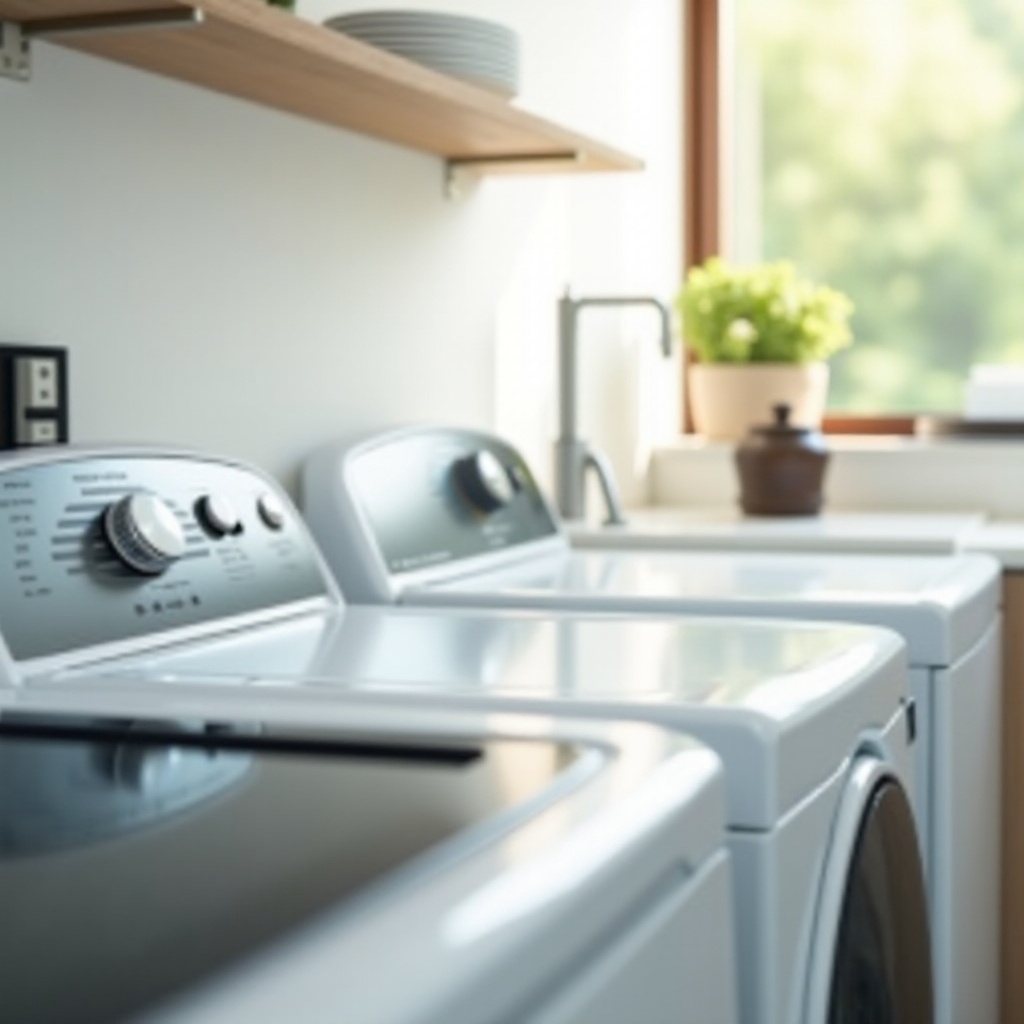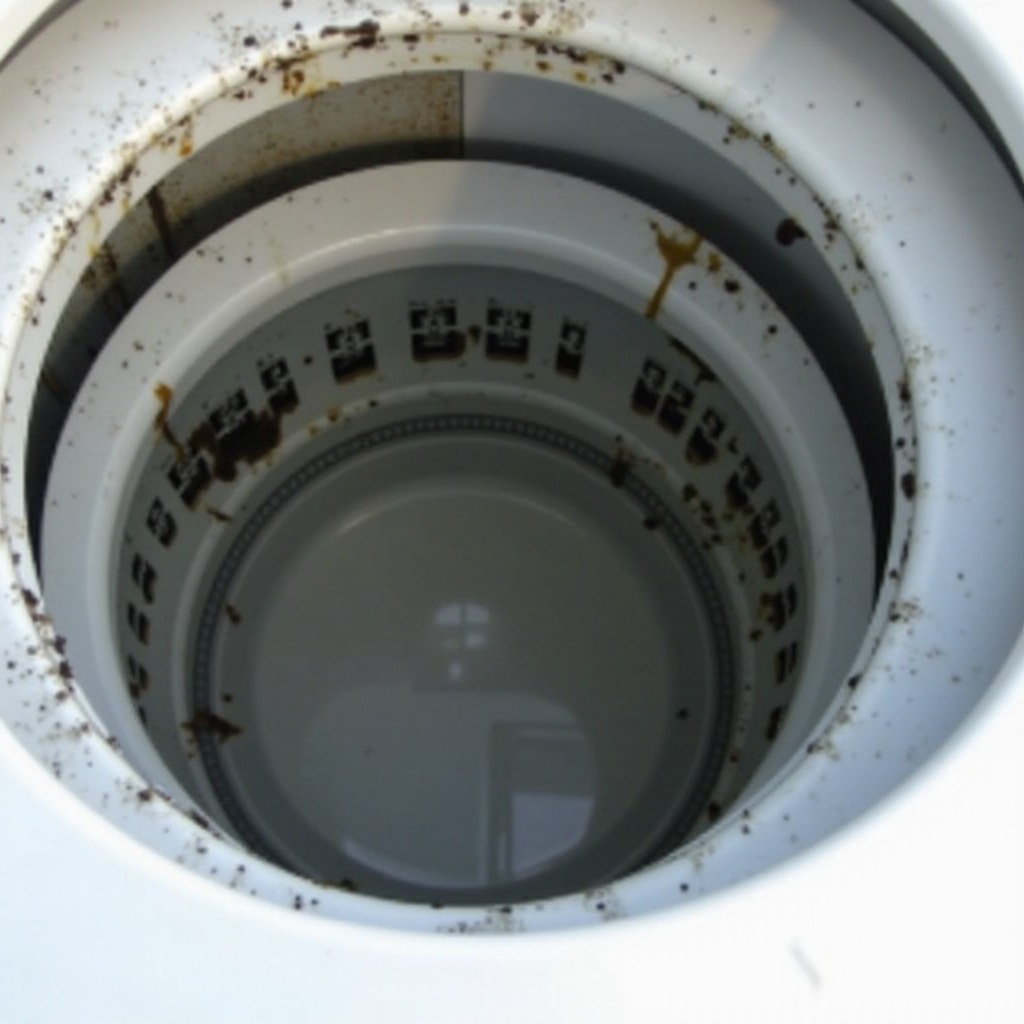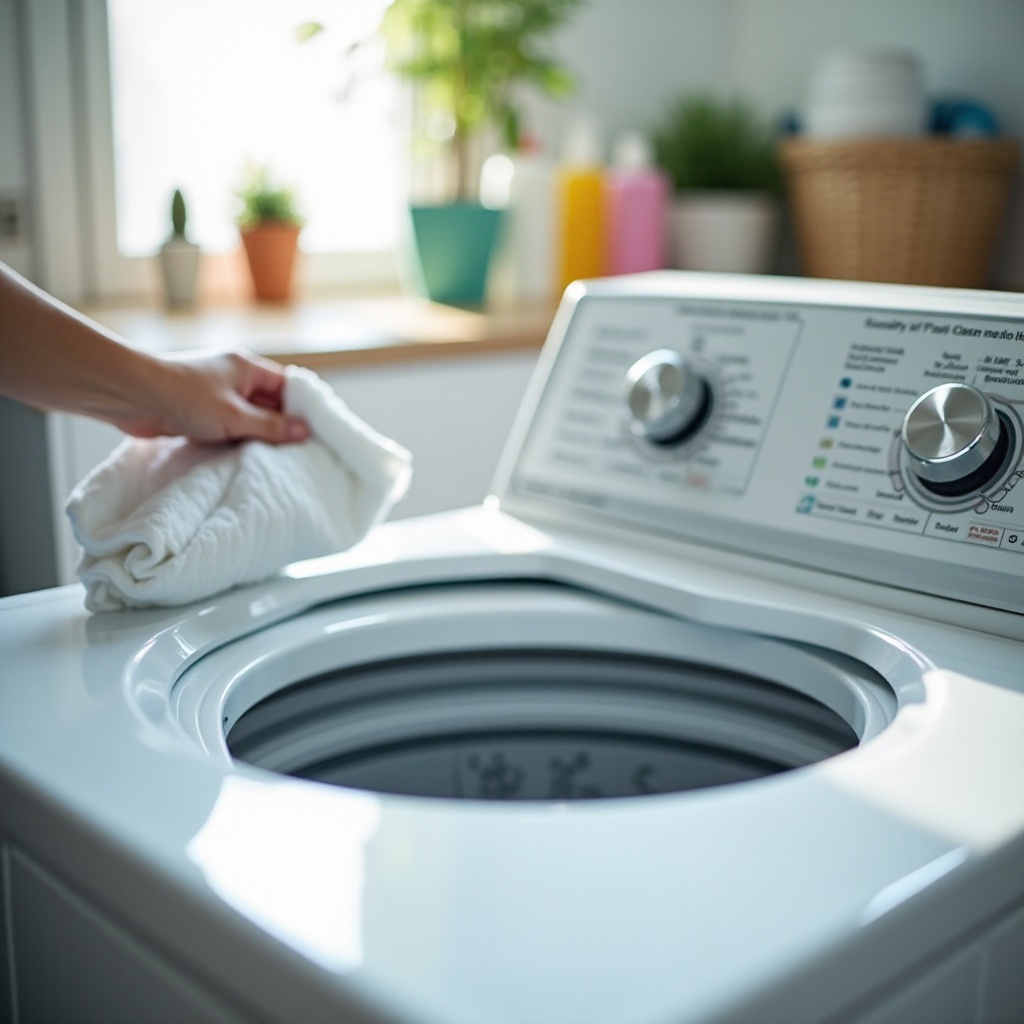Introduction
Maintaining a clean washer is crucial for healthy living and efficient laundry performance. Mold growth in a top-load washer can lead to unpleasant odors, stained clothes, and even health issues. This guide will provide you with effective strategies to prevent mold formation and remove existing mold, ensuring your washer stays in top condition.

Understanding Mold in Top-Load Washers
Causes of Mold Growth
Mold thrives in warm, damp environments, making your top-load washer a prime candidate for mold issues. Mold spores can latch onto detergent residue, fabric softeners, and humidity, multiplying rapidly under the right conditions.
Common Areas Where Mold Develops
The drum, detergent dispenser, and rubber seals are common areas mold tends to develop. These parts of your washer frequently remain moist and can harbor detergent residues and dirt, creating perfect mold breeding grounds.
Impact of Mold on Clothes and Health
Mold not only affects your washer but can also impact your clothes and health. Clothes might come out smelling musty, and prolonged exposure to mold spores can cause respiratory issues, skin irritation, and allergies.
Understanding these aspects of mold is the first step in combating it. Let's move on to how you can prevent mold growth in your washer.

Prevention Strategies for Mold
Regular Cleaning Routines
Maintaining a regular cleaning schedule is key. Clean your washer once a month to prevent mold from gaining a foothold. Run a hot wash cycle with two cups of white vinegar or a washer-specific cleaner.
Keeping the Washer Lid Open
After each wash, leave the washer lid open to allow the inside to dry out. This simple step reduces humidity, making it less likely for mold to form.
Using the Right Detergent
Use high-efficiency (HE) detergents designed for top-load washers. These detergents produce fewer suds, which means less residue left behind. Avoid using too much detergent and fabric softeners, as they can create a breeding ground for mold.
Avoiding Overloading Your Machine
Overloading your washer means clothes won't rinse properly, leaving behind more moisture and detergent residue. Follow the manufacturer's load recommendations to prevent mold growth.
Importance of Air Circulation
Good air circulation in your laundry area can help keep humidity levels down. Consider using a dehumidifier if your laundry room is particularly damp.
Let’s look into specific cleaning methods to tackle mold buildup.

How to Clean Mold from Your Top-Load Washer
Step-by-Step Cleaning Guide
- Run a Hot Water Cycle: Start by running a hot water cycle with an empty drum. Add two cups of white vinegar to the drum to help disinfect and dissolve any soap scum or mold.
- Scrub the Interior: After the cycle, use a microfiber cloth and a solution of water and vinegar to scrub the interior of the drum, the lid, and the detergent dispensers.
- Address Rubber Seals: Pay special attention to the areas around the rubber seals. Use an old toothbrush dipped in vinegar to scrub these hard-to-reach spots.
- Run a Bleach Cycle: Finally, run another hot water cycle, this time with a cup of bleach to kill any remaining mold spores. Make sure to ventilate the room well when using bleach.
Recommended Cleaning Agents and Tools
- White Vinegar: Natural cleaner that’s safe for your washer components.
- Bleach: Effective at killing mold but should be used sparingly to avoid damage.
- Microfiber Cloths: Non-abrasive and perfect for wiping down the washer's interior.
- Old Toothbrush: Ideal for scrubbing hard-to-reach spots.
Using Natural Cleaning Solutions
For those who prefer eco-friendly methods, natural solutions can be just as effective. Baking soda mixed with water forms a soft scrub that can help tackle tough stains and mold without the use of harsh chemicals.
Now that you know how to clean mold from your washer, let's explore some additional maintenance tips.
Additional Tips for Maintaining a Mold-Free Washer
Regular Maintenance Checks
Perform regular checks on your washer’s hoses for leaks and ensure they are properly connected. Look out for any signs of wear and tear that could create an ideal environment for mold.
Addressing Hard Water and Soap Scum Issues
If you live in an area with hard water, mineral deposits can build up and contribute to mold growth. Consider using a water softener or adding a cup of white vinegar to the rinse cycle occasionally to help dissolve these deposits.
Dealing with Persistent Mold Problems
For persistent mold issues that don’t respond to regular cleaning, it might be best to consult a professional. Persistent problems could be a sign of a more significant issue with your washer that needs attention.
These tips will help you maintain your washer in optimal condition. Let’s wrap things up with a quick conclusion.
Conclusion
Preventing and removing mold in your top-load washer is essential for the longevity of your machine and the hygiene of your laundry. By following regular cleaning routines and implementing preventive measures, you can ensure your washer remains mold-free and efficient. Consistently maintaining your washer will save you time and improve the quality of your laundry.
Frequently Asked Questions
How often should I clean my top-load washer to prevent mold?
Clean your top-load washer at least once a month using a cleaning cycle with vinegar or a washer-specific cleaner to prevent mold buildup.
Can using bleach damage my washer?
Using bleach occasionally is safe and effective for killing mold. However, frequent use can damage the washer’s components, so it’s best to use it sparingly.
What should I do if I have persistent mold issues despite regular cleaning?
If you have persistent mold issues despite regular cleaning, consult a professional. It might indicate a more significant problem with your washer that needs professional attention.
